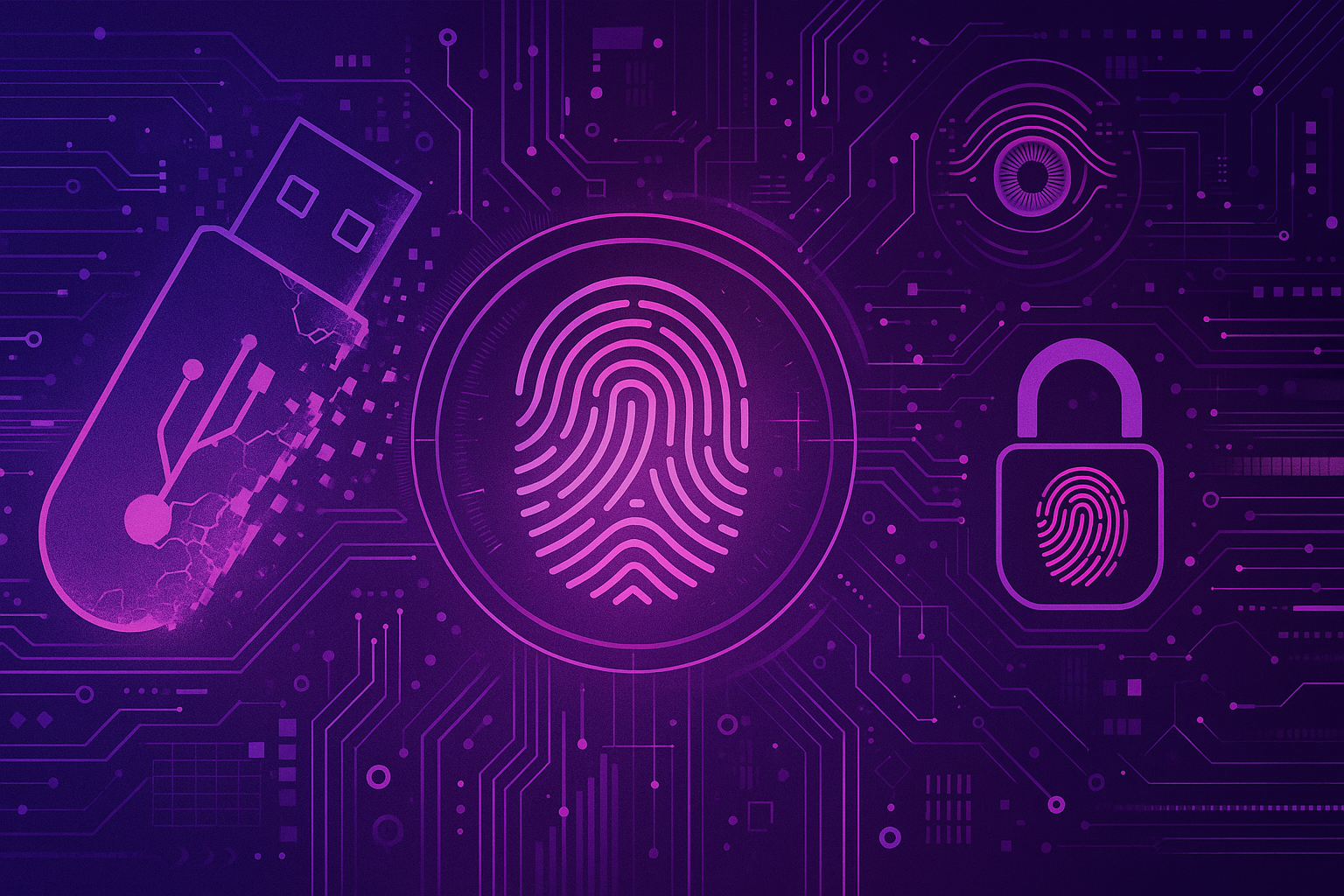Why USB Keys (Security Keys) Are No Longer Enough
By Kevin Surace | 5 minute read
USB Keys were step one. Token is the final step. The only way to stop phishing, spoofing, and relay attacks dead is biometric, proximity-based, phishing-proof hardware.
USB keys have several issues which render them a legacy product:
-
Physical Device Attacks
- Side-channel extraction (unfixable in many USB Keys)
With lab access, attackers can pull private key material out of the secure element. Token devices use tamper-resistant secure elements + biometric gating, making secrets useless even if extracted. - Underlying library flaw baked in
A majority of USB Keys rely on a widely used cryptographic library that has a known vulnerability. Since these keys are hard-coded and not OTA-upgradable, the flaw can never be fixed in the field. If a hacker gets the device in hand, they can potentially steal FIDO credentials. Token products are OTA-upgradable, so any discovered vulnerability can be patched immediately. - Device theft & replay
If an attacker steals a USB Key, they can still use it wherever credentials are registered (no biometric check). With Token, stolen hardware is useless without the fingerprint + proximity requirement. - No secure proximity requirement
USB Keys work wherever they’re plugged in. A stolen laptop + USB Key = instant access. Token requires the user to be physically present (biometric + BLE proximity). - Fake USB key swap
An attacker can drop or swap in a malicious USB dongle that looks like the user’s key. When plugged in, it can install malware, exfiltrate data, or impersonate a trusted device. Token products, being wireless and biometric, never interact via USB ports and can’t be “swapped in” or spoofed this way.
-
Human Factor Exploits
- No biometric enforcement
USB Keys rely on possession + tap. Any user (or attacker with device) can approve. Token mandates a live biometric match. - MFA fatigue / relay abuse
USB Keys don’t natively stop phishing relays. A phishing site can still proxy a FIDO2 challenge, and the user taps. Token’s domain binding means it will never sign a spoofed origin. - Social engineering & helpdesk bypass
Help desks can reset USB Keys or issue new ones without verifying biometrics. Token eliminates that vector — no fingerprint, no login, regardless of what IT resets.
-
Protocol / Architectural Weaknesses
- FIDO2 origin binding is only as good as browser enforcement
Malicious middleware or browser exploits can fool a USB Key into signing. Token adds hardware-enforced origin checking, refusing spoofed domains regardless of browser behavior. - NFC relay attacks
Many USB Keys with NFC can be proxied over long distances. Token relies on encrypted BLE with proximity limits. - Lack of OTA patching
USB Keys cannot be upgraded in the field. Any new discovered flaw = stuck until new hardware. Token products are OTA-upgradable, closing gaps as threats evolve.
-
Cloud / Recovery Issues
- No user-proofing against fallback
USB Key deployments often allow backup login (SMS, recovery codes, etc.). Those backdoors are human-weak. Token eliminates fallbacks (no cloud recovery, no bypass codes). - Shared device problem
Some orgs let multiple users share a USB Key for convenience. This undermines identity binding. Token prevents this — every device is fingerprint-bound to an individual.
-
Advanced Threats
- Evil Maid attacks (infected endpoint)
Malware on a laptop can proxy a USB Key transaction (relay the FIDO2 challenge). Token checks domain + biometric + proximity, breaking that chain. - Session cookie hijacking still works with USB Keys
Even if auth is secure, cookies can be stolen. Token reduces exposure with proximity-based revalidations and biometric checks for sensitive re-logins. - Supply chain tampering
USB Keys are mass-produced without per-user binding. Compromised supply chain = compromised device. Token devices are individually fingerprint-registered and unusable otherwise.
-
Usability & Behavioral Gaps
- High likelihood of leaving dongles behind
USB Keys are often forgotten in conference rooms, cafes, or laptops. Token Ring is worn daily, like a watch or wedding band — you put it on in the morning and it never leaves you. - USB dependency
Users must plug in USB Keys or tap NFC. This is clumsy, inconsistent across devices, and leads to weaker backup methods. Token is wireless BLE, seamless across laptops, desktops, and mobile. - No continuous trust
Once tapped, access is granted indefinitely. Token enforces session-level biometric + proximity, reducing hijack risks. - Convenience gap
USB Keys require conscious “find key → plug in → tap.” Token requires only a fingerprint tap while the ring or BioStick is already with you, always in range. This simplicity increases adoption and eliminates “security fatigue.”
Why Token Closes These Gaps
|
|
Ready to Review Options? Click Here to Learn More.
Sign Up
Keep up to date with phishing and ransomware news.
Token will not sell, trade, lease, or rent your personal data to third parties.



